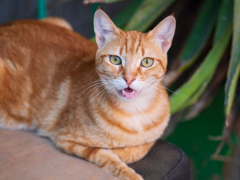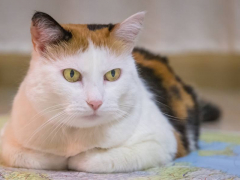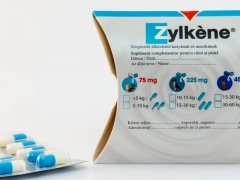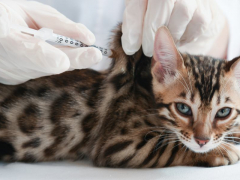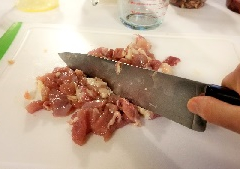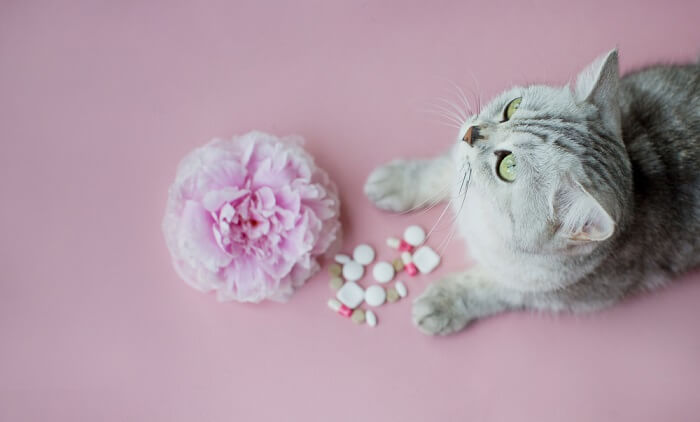
Amlodipine is a common medication used to treat hypertension (high blood pressure) in cats. In this article you’ll learn about amlodipine, how it works, side effects to watch out for, and some frequently asked questions.
Amlodipine For Cats Overview

About Amlodipine for Cats
Amlodipine is a calcium-channel blocker, a type of medication used to control high blood pressure. It is a common first-line drug of choice for treating cats that have high blood pressure.
High blood pressure in a cat is considered to be a medical issue if a systolic blood pressure measurement greater than 160mmHg is repeatedly obtained. A single elevated measurement in conjunction with signs including sudden blindness, collapse, disorientation, seizure-like episodes, weakness, or paralysis also suggests the need for treatment.
What Does Amlodipine Do for Cats?
Amlodipine is a dihydropyridine calcium channel blocker. Calcium channels are ion channels within cells that selectively allow calcium ions. They are present in the cells of most mammals and have a variety of functions within cells, including transmitting signals between cells and the contraction of the muscle.
When amlodipine blocks calcium channels in the smooth muscle of blood vessels, it allows for the blood vessels to dilate, which decreases blood pressure.
Side Effects of Amlodipine for Cats
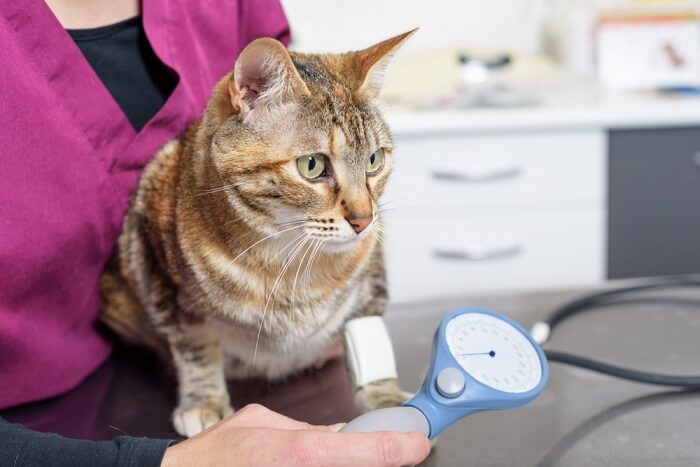
Underlying chronic kidney disease can sometimes be a cause of elevated blood pressure and it’s a common practice in these cases to add in a second blood pressure medication.
As with any blood pressure medication which acts to lower blood pressure, lowering it too much, which is called hypotension, is a chief potential side effect. This is why it’s always best to only use amlodipine when and as prescribed by your kitty’s veterinarian.
This is also why it’s very important to keep appointments for rechecking blood pressure at your vet’s office after any changes to a blood pressure medication dosage.
Some digestive upset signs like vomiting, diarrhea, and decreased appetite are uncommonly seen. When related to the medication, these side effects are usually mild and transient.
Amlodipine is extensively metabolized by the liver, and so should be used cautiously in any cats with a medical history of liver disease. It should also be used carefully for cats being treated for heart failure.
Underlying chronic kidney disease can sometimes be a cause of elevated blood pressure. There can be some concern when amlodipine is used on its own when the kidney disease is present that it could put a greater strain on the filtration system of the kidneys. It can be common in these cases to add in a second blood pressure medication.
Some remaining infrequent side effects include elevation of kidney values (independent of known pre-existing kidney disease), low potassium, and weight loss. Gum inflammation has apparently been reported but is considered exceedingly rare.
Amlodipine for Cats Dosage
Amlodipine should only be started under the care of a veterinarian based on documented elevated blood pressure readings, sometimes in conjunction with signs and symptoms of hypertension. The dosage for amlodipine is typically started at ¼ of a 2.5mg tablet once a day.
Adjustments to the dose of amlodipine are only made based on recheck blood pressure measurements at the vet, to ensure that the dosage is catered to the individual needs of your cat.
It can be common to add in a second blood pressure medication if high blood pressure cannot be fully controlled on amlodipine alone.
Conclusion
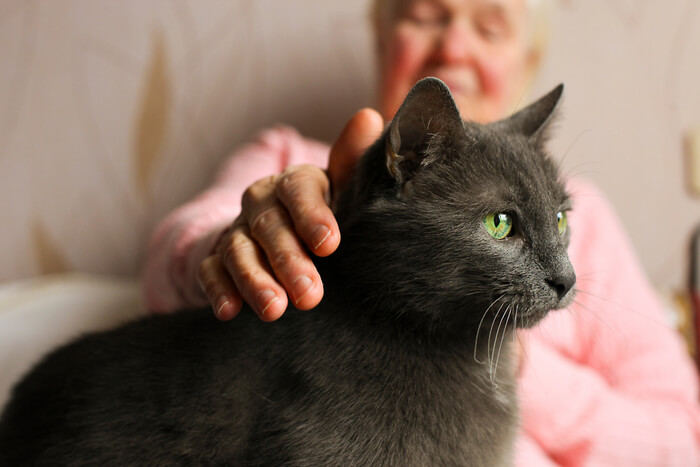
Your cat’s blood pressure is influenced by multiple factors, including the heart and blood vessels, along with a complex regulatory system across the entire body.
Amlodipine is a common, first-line choice for a majority of cats suffering from high blood pressure, which can be secondary to a few different disease processes.
It’s always important to only use a blood pressure medication if hypertension and/or related signs of it have been accurately documented. If you feel your cat is exhibiting signs of hypertension and may benefit from a blood pressure medication, make sure to speak with your vet first.
Drug Dosing Disclaimer: We are only able to provide doses for medications that are FDA approved for use in cats and only as the label guidelines dictate. For medications that are used off-label we can only provide guidelines and safety information for use. Safe and appropriate dosing for off-label medications can only be determined by a primary care veterinarian.
We encourage you to work with your veterinarian to determine if a particular medication is appropriate for your cat. Changing or adjusting a dose for your cat on your own without consulting with a veterinarian can carry risk. We do not encourage use of medications prescribed for human use in pets without first consulting with a primary care veterinarian.
Frequently Asked Questions
How Quickly Does Amlodipine Work in Cats?
In cats, effects on systemic blood pressure can be seen within 4 hours of it being given. It typically remains effective for about 30 hours, allowing for just once daily dosing.
Is Amlodipine Safe for Cats?
While it should be used cautiously in certain cases, a majority of cats with high blood pressure do tolerate amlodipine well.
Because it can take a couple of hours for effects to be seen, sudden, acute side effects in cats after a single dose are uncommon.
What are the Symptoms of High Blood Pressure in Cats?
The symptoms or clinical signs of feline hypertension can include but are not limited to sudden blindness, collapse, disorientation, seizure-like episodes, weakness, or paralysis. Keep in mind that these signs are not specific for high blood pressure and can be seen with other diseases too.
If your kitty is suffering from any of these signs, it’s always best to have your furry friend examined by your vet to determine what the underlying cause is and what treatment is best.
Can a Cat Overdose on Amlodipine?
Overdoses of blood pressure medications like amlodipine are possible, which can lead to blood pressure being too low. This happens most often when an additional dose is given at home by accident. This is why it’s very important to have a designated person at home responsible for giving medications to your cat. If multiple family members are involved in administering medications, make sure to keep a schedule or communicate effectively.
Overdoses can also occur if tablets spill out of the bottle and a kitty ingests multiple doses at a time. Always make sure to keep medications in a secure location.
If you have concern your cat may be experiencing an overdose on amlodipine or any other prescription medication, always be sure to contact ASPCA Animal Poison Control (1-888-426-4435) or the Pet Poison Helpline (1-855-764-7661). A fee does apply, but your vet will often need the toxicologist's advice to help develop a treatment plan for your cat.
